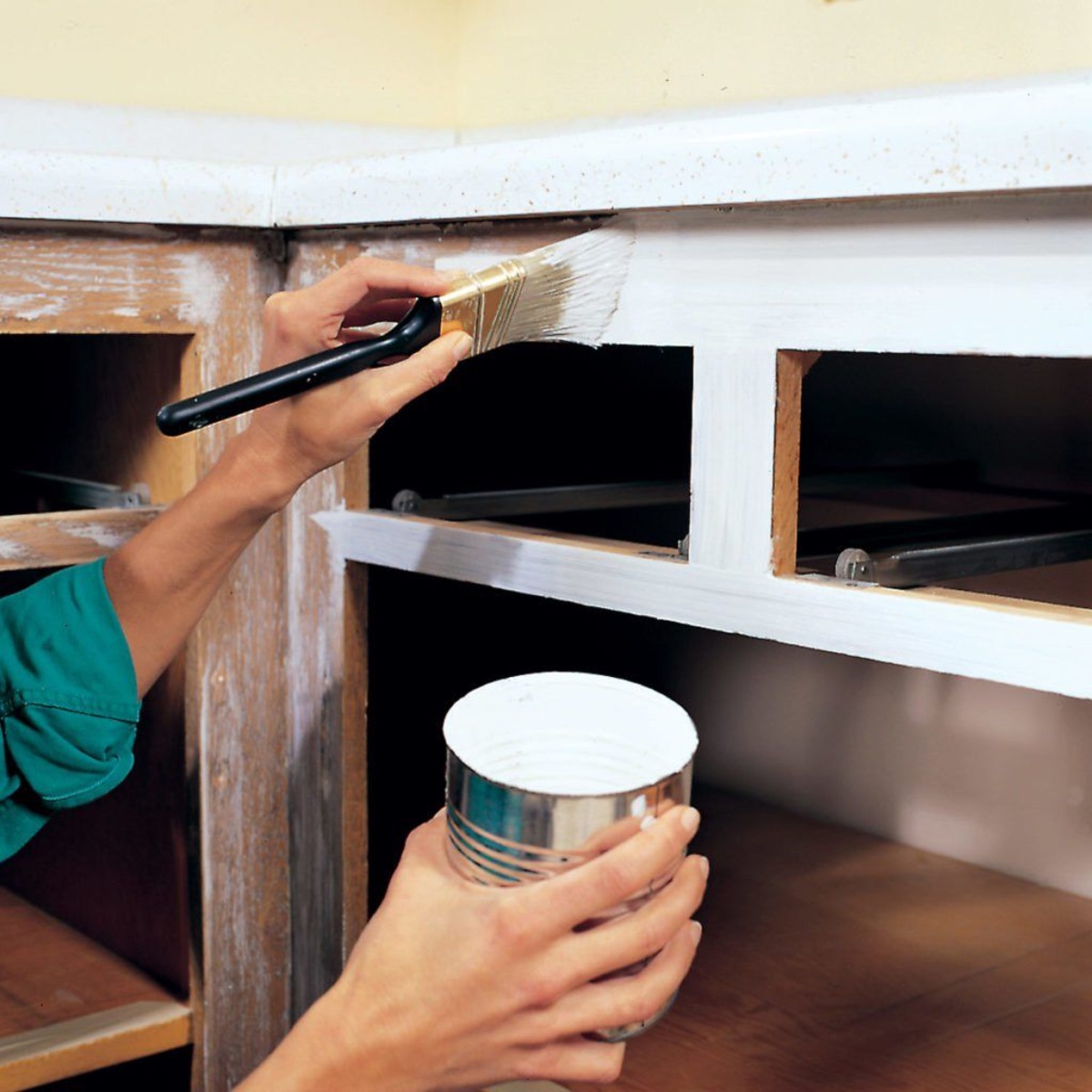Understanding the Basics: How To Paint Wood Kitchen Cabinets Without Sanding

Painting wood kitchen cabinets without sanding can be a time-saving and less messy approach, especially for those who want to refresh their kitchen without a major renovation. This method offers several advantages and requires specific paint types and tools.
Suitable Paint Types
Choosing the right paint is crucial for a successful paint job without sanding. The paint should adhere well to the existing finish and provide a smooth, durable coating.
- Adhesion Primer: This primer is designed to create a strong bond between the paint and the existing surface, even without sanding. It helps to fill in minor imperfections and provides a smooth base for the topcoat.
- Oil-Based Paint: Oil-based paints are known for their durability and resistance to moisture and stains. They are often preferred for kitchen cabinets because they can withstand the wear and tear of daily use.
- Acrylic Paint: Acrylic paints are water-based and offer a good balance of durability, ease of application, and low odor. They are a popular choice for painting cabinets without sanding, especially for those concerned about fumes.
Necessary Tools and Materials
To successfully paint kitchen cabinets without sanding, you will need a few essential tools and materials.
- Paintbrushes: Choose brushes specifically designed for painting cabinets, with angled bristles for precise application and a comfortable grip.
- Paint Roller: A roller is useful for covering large areas quickly and evenly. Choose a roller with a nap length suitable for the type of paint you are using.
- Paint Tray: A paint tray with a liner is essential for holding and dispensing paint.
- Drop Cloths: Protect your floors and surrounding areas from paint splatters.
- Painter’s Tape: Use painter’s tape to mask off areas you don’t want to paint, ensuring clean lines and a professional finish.
- Cleaning Supplies: You will need cleaning supplies such as soap, water, and rags to clean your tools and surfaces before and after painting.
Preparation and Cleaning
/cdn.vox-cdn.com/uploads/chorus_image/image/66181129/iStock_1152705690.7.jpg)
A clean surface is the foundation for a successful paint job. Before you even think about picking up a brush, it’s crucial to properly prepare your cabinets. This involves removing any existing finishes, cleaning the surfaces, and ensuring they are free from any debris or imperfections.
Cleaning the Cabinets
Cleaning the cabinets is essential for removing dirt, grease, and grime, which can prevent the paint from adhering properly.
- Start by removing all cabinet doors and drawers. This will allow you to access all surfaces and clean them thoroughly.
- Use a mild detergent and warm water to clean the cabinets. Avoid harsh chemicals, as they can damage the wood or existing finishes.
- Wipe down the cabinets with a damp cloth and then dry them completely. Make sure to remove any residual soap or water.
Painting Techniques

The success of your kitchen cabinet makeover hinges on applying the paint flawlessly. This section will guide you through the best practices for achieving a smooth, even finish without sanding. We’ll explore different painting techniques, emphasizing the importance of even coats and drying time.
Applying Paint
The key to painting cabinets without sanding lies in using the right tools and techniques. Here are some essential tips:
- Use a High-Quality Paint Brush: Invest in a good quality brush with synthetic bristles. These brushes are designed to distribute paint evenly and minimize brushstrokes. Choose a brush size that suits the size of your cabinets.
- Thin the Paint: Adding a small amount of water to your paint can make it easier to apply and reduce brushstrokes. However, don’t overdo it; excessive thinning can compromise the paint’s durability.
- Apply Thin Coats: Thin coats are crucial for achieving a smooth finish. Multiple thin coats will allow the paint to dry evenly and prevent drips and runs.
- Avoid Overlapping: While applying each coat, try to avoid overlapping strokes. This can lead to uneven paint build-up and a less-than-perfect finish.
- Use a Paint Roller for Large Surfaces: For larger cabinet doors and drawer fronts, a paint roller can be a time-saver. Use a high-quality roller with a nap length suitable for your paint type. Apply thin, even coats and avoid excessive pressure.
Drying Time, How to paint wood kitchen cabinets without sanding
Allow sufficient drying time between coats. This ensures the paint dries completely and avoids smudging or smearing. Refer to the paint manufacturer’s instructions for specific drying times.
Even Coats
Even coats are essential for a professional-looking finish. This means applying the paint uniformly without leaving streaks or patches.
“Patience is key when painting cabinets. Allow the paint to dry completely between coats, and don’t rush the process. This will ensure a smooth, even finish that you’ll be proud of.”
How to paint wood kitchen cabinets without sanding – Painting wood kitchen cabinets without sanding can be a quick and easy way to refresh your space, but it’s essential to choose the right paint for the job. Just like when decorating a small bedroom in Indian style , you need to consider the existing color and texture of the cabinets.
For cabinets, a good primer can help create a smooth surface for the paint to adhere to, ensuring a long-lasting finish.
Painting wood kitchen cabinets without sanding can be a time-saving project, but it requires the right preparation. You might be wondering how this relates to the song “Bedroom Floor” by Liam Payne, but the lyrics, which explore the complexities of a relationship, are actually a great reminder that even the most challenging tasks can be overcome with the right approach.
Just like Liam Payne’s journey through love, you can successfully paint your kitchen cabinets without sanding, with a little patience and the right techniques.
